
Mantis
Mantis
Mantis
Among insects, the “mantis” is one of the most powerful hunters and is a popular insect among insect lovers. It has a fierce appearance, lying in wait and attacking its prey in an instant, holding it down with its sickle and eating it up. It has a demonic appearance when it spreads its wings to intimidate others. Its mysterious compound eyes seem to be staring at something. It is a treasure trove of mysteries that become more and more fascinating as you learn about them! Let’s take a tour of the wonderful world of the mantis.
Mantis Basic Infomation
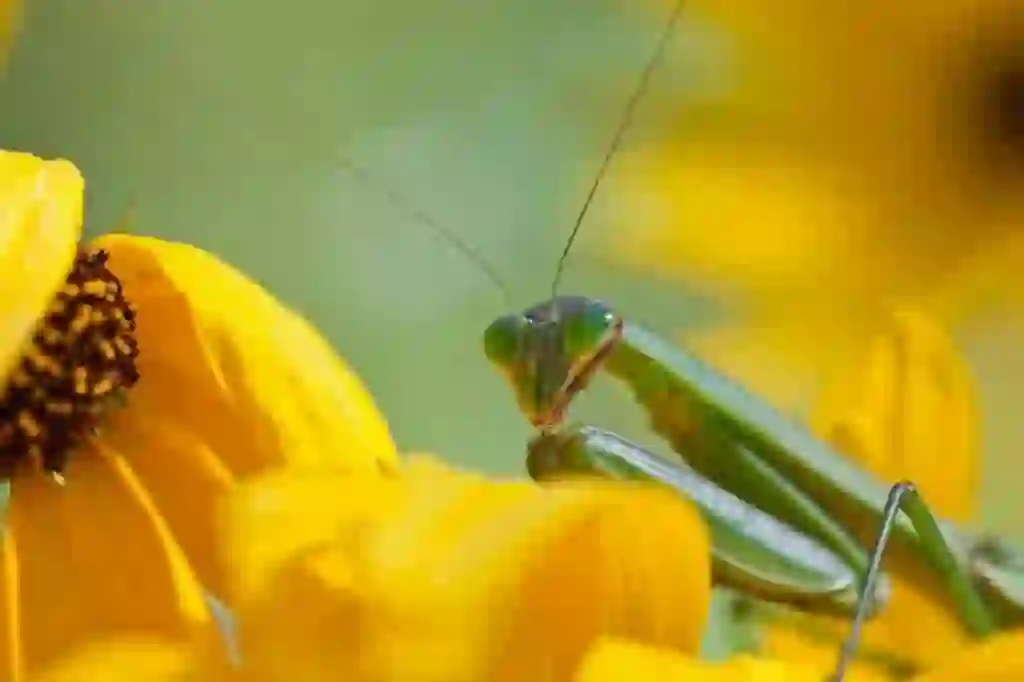
The mantis is a Insecta Mantodea. It is also called Dictyoptera Mantids. Carnivorous insect with sickle-shaped legs. Kanji notation:螳螂,蟷螂,鎌切,蠅取虫,祷告虫. Alias:worshiping insect and many others. Scientific name:Manteoda. English name:Mantis or Praying mantis.
In small species, the body length is about 20mm, while in large species it can reach nearly 20cm. The mantis has thin antennae, two large compound eyes and three simple eyes. The compound eyes can see almost 360 degrees. Moreover, the boundary between the head and the prothorax is soft, so it can move only the head widely. It is only the mantis in the insect world that can turn its face backward while keeping its body facing forward!
The mantis has six legs: the forelegs (grasping legs for catching prey), the middle legs, and the hind legs. The middle and hind legs can support the body firmly, so the forelegs can be used freely. The sickle-shaped forelegs of the mantis are not for killing prey, but for quickly catching and holding it down. The sickles have sharp spikes and hold the prey tightly without letting go, then eat it up with sharp mandibles. After eating, it carefully licks its forelegs several times to clean them.
There are about 2,000 species of mantises distributed worldwide. In Japan, mantises belonging to the families Mantidae and Hymenopodidae are widely distributed from Hokkaido to Honshu, Shikoku, Kyushu, Okinawa and Tsushima (some species do not inhabit certain regions).
Mantises hatch from eggs laid in a foamy sheath around April to June. The newly hatched nymphs have thin skin and their legs and antennae are folded inside the skin. As soon as they emerge from the egg case, they shed their skin and molt. Not all of the nymphs that hatch will survive; some are eliminated by cannibalism at this stage.
The molted nymphs have a shape similar to that of an adult mantis, although they do not yet have wings. Mantises are hunters from their nymph stage! They catch prey with their foreleg sickles, eat it up, molt repeatedly as they grow, and finally molt (pupate) into winged adults.
In the autumn breeding season, males search for females to mate with, and females lay many eggs in an egg case. Both males and females die between October and December after leaving offspring, but males can also be eaten by females during mating.
If you want to keep a rare animal, you may need to follow the laws established by your country. This time, I will introduce how to keep mantises at home in Japan. Things you need for breeding: a breeding box, a perch, a pot bottom net, a spray bottle, food, and cotton.
・Prepare a breeding box. Since mantises molt repeatedly and grow larger, it is better to have a larger breeding box. Mantises hang and molt, so a space with height is necessary. If you use a commercially available insect cage, use it vertically, and if you use a clear case, use one with sufficient height. Since mantises may cannibalize each other, be careful to keep only one mantis in one box.
・Create a foothold for the mantis (perch or pot bottom net). Put a perch in the breeding box. Put something that reaches the ceiling as much as possible. Also, it is a good idea to put a hard pot bottom net to create a foothold when molting. It is important to fix it firmly so that it does not fall. ・Mantis food. When mantises are small larvae, they eat aphids and fruit flies, and as they grow larger, they eat insects such as crickets and butterflies. For food, it is good to put a bottle of damaged bananas or the like in the box because fruit flies will generate. Fruit flies and crickets can also be obtained at online shops. Be careful when feeding live insects because if they are larger than the mantis, they may be attacked instead. When you don’t want to use live food, cut unsweetened yogurt, additive-free sausages, raw meat, kamaboko, etc. into small pieces and move them in front of the mantis with tweezers. Yogurt etc. is put on the tip of chopsticks or bamboo skewers. Feeding once every 1-2 days is sufficient. Be careful not to eat too much and swell your stomach and burst and die. ・Do not run out of water. Mantises die if they cannot take in water. To make sure that water can be drunk at any time, spray water on the wall of the breeding box with a sprayer or place a degreased cotton soaked in water on top of a PET bottle. ・Keep the appropriate temperature for breeding. The appropriate temperature for mantis breeding is about 20-25 degrees Celsius. On hot days, place it in a shady place with good ventilation, and on cold days, place it in a warm place. Also, remove feces and food scraps from the breeding box and exchange the degreased cotton and water in the water container every day to keep it clean. ・Attention during molting. Mantises molt repeatedly to become adults. If you touch the mantis too much because it is cute, it can lead to molting failure. Especially before and after molting, do not move or touch the breeding box. If molting fails or falls off, legs may come off, legs may bend, or worst case scenario die. After completing the last molt (eclosion), it becomes an adult with wings.
Mantis Q&A

Mantis body.
In small species, the body length is about 20mm, while in large species it can reach nearly 20cm. The mantis has thin antennae, two large compound eyes and three simple eyes. The compound eyes can see almost 360 degrees. Moreover, the boundary between the head and the prothorax is soft, so it can move only the head widely. It is only the mantis in the insect world that can turn its face backward while keeping its body facing forward!
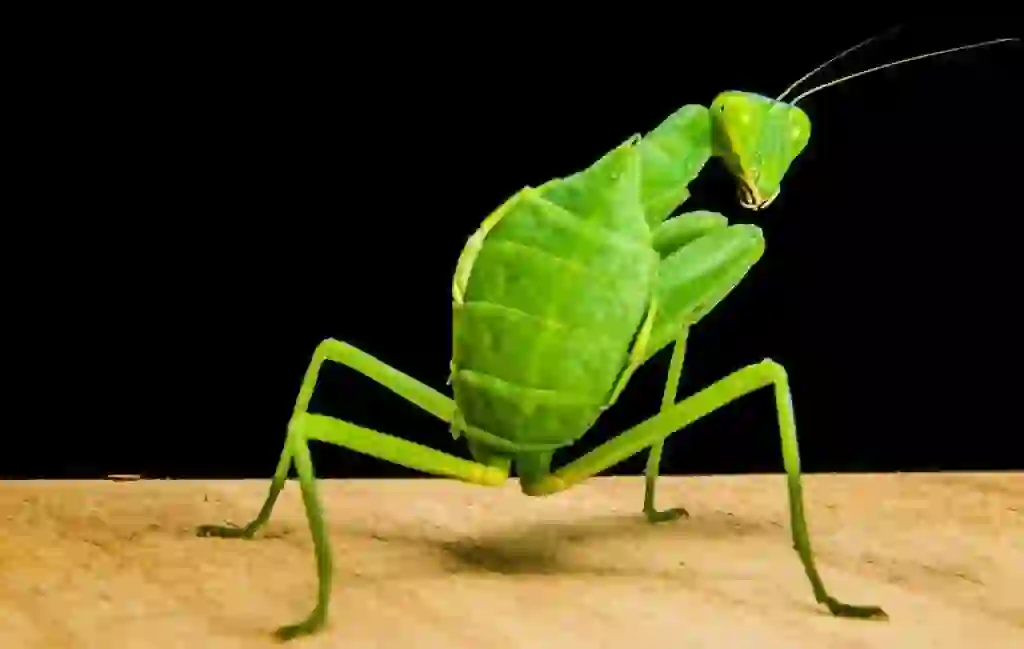
Mantis legs and sickle.
The mantis has six legs: the forelegs (grasping legs for catching prey), the middle legs, and the hind legs. The middle and hind legs can support the body firmly, so the forelegs can be used freely. The sickle-shaped forelegs of the mantis are not for killing prey, but for quickly catching and holding it down. The sickles have sharp spikes and hold the prey tightly without letting go, then eat it up with sharp mandibles. After eating, it carefully licks its forelegs several times to clean them.
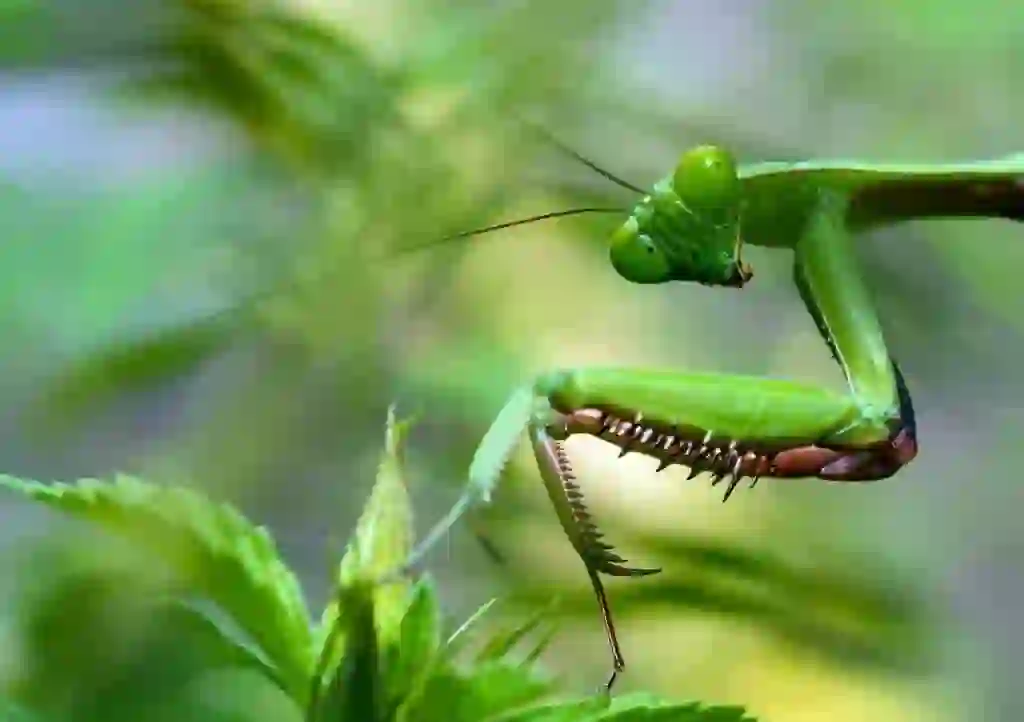
Mantis habitat.
There are about 2,000 species of mantises distributed worldwide. In Japan, mantises belonging to the families Mantidae and Hymenopodidae are widely distributed from Hokkaido to Honshu, Shikoku, Kyushu, Okinawa and Tsushima (some species do not inhabit certain regions).
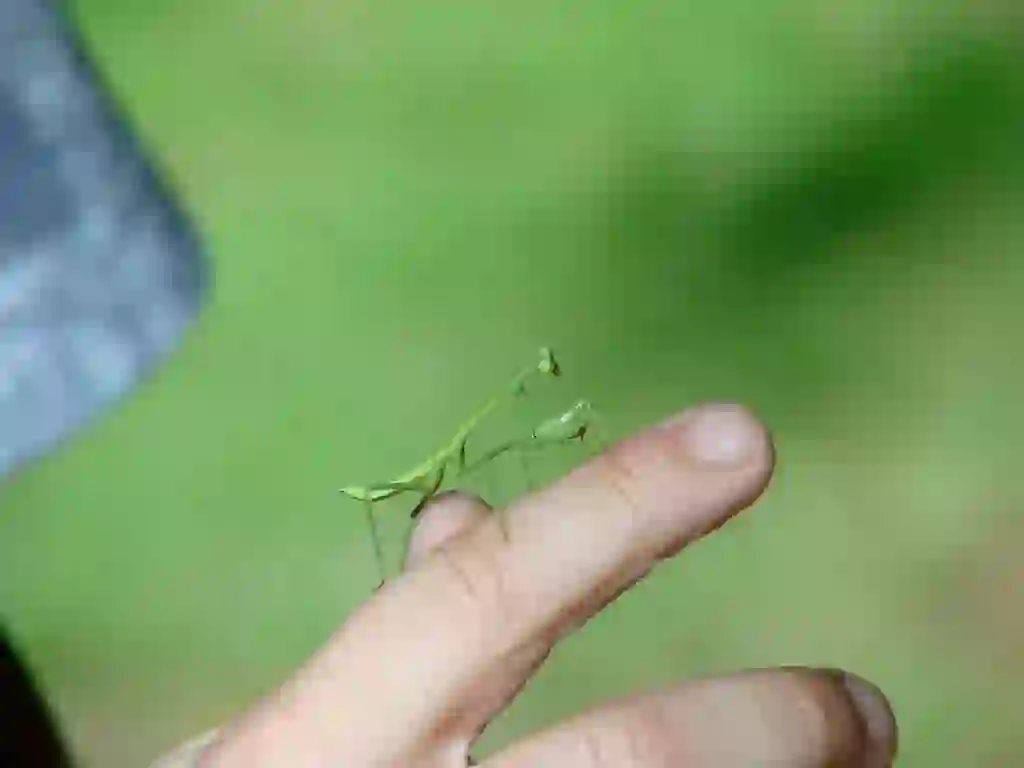
The life of a praying mantis.
Mantises hatch from eggs laid in a foamy sheath around April to June. The newly hatched nymphs have thin skin and their legs and antennae are folded inside the skin. As soon as they emerge from the egg case, they shed their skin and molt. Not all of the nymphs that hatch will survive; some are eliminated by cannibalism at this stage.
The molted nymphs have a shape similar to that of an adult mantis, although they do not yet have wings. Mantises are hunters from their nymph stage! They catch prey with their foreleg sickles, eat it up, molt repeatedly as they grow, and finally molt (pupate) into winged adults.
In the autumn breeding season, males search for females to mate with, and females lay many eggs in an egg case. Both males and females die between October and December after leaving offspring, but males can also be eaten by females during mating.
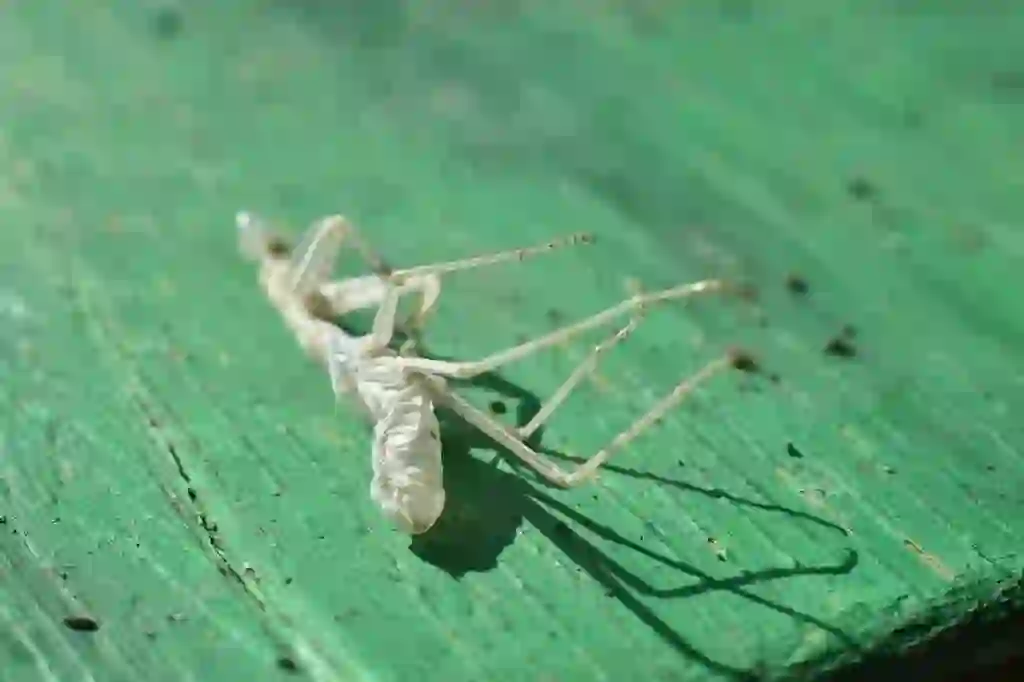
How to keep a praying mantis.
If you want to keep a rare animal, you may need to follow the laws established by your country. This time, I will introduce how to keep mantises at home in Japan. Things you need for breeding: a breeding box, a perch, a pot bottom net, a spray bottle, food, and cotton.
・Prepare a breeding box. Since mantises molt repeatedly and grow larger, it is better to have a larger breeding box. Mantises hang and molt, so a space with height is necessary. If you use a commercially available insect cage, use it vertically, and if you use a clear case, use one with sufficient height. Since mantises may cannibalize each other, be careful to keep only one mantis in one box.
・Create a foothold for the mantis (perch or pot bottom net). Put a perch in the breeding box. Put something that reaches the ceiling as much as possible. Also, it is a good idea to put a hard pot bottom net to create a foothold when molting. It is important to fix it firmly so that it does not fall. ・Mantis food. When mantises are small larvae, they eat aphids and fruit flies, and as they grow larger, they eat insects such as crickets and butterflies. For food, it is good to put a bottle of damaged bananas or the like in the box because fruit flies will generate. Fruit flies and crickets can also be obtained at online shops. Be careful when feeding live insects because if they are larger than the mantis, they may be attacked instead. When you don’t want to use live food, cut unsweetened yogurt, additive-free sausages, raw meat, kamaboko, etc. into small pieces and move them in front of the mantis with tweezers. Yogurt etc. is put on the tip of chopsticks or bamboo skewers. Feeding once every 1-2 days is sufficient. Be careful not to eat too much and swell your stomach and burst and die. ・Do not run out of water. Mantises die if they cannot take in water. To make sure that water can be drunk at any time, spray water on the wall of the breeding box with a sprayer or place a degreased cotton soaked in water on top of a PET bottle. ・Keep the appropriate temperature for breeding. The appropriate temperature for mantis breeding is about 20-25 degrees Celsius. On hot days, place it in a shady place with good ventilation, and on cold days, place it in a warm place. Also, remove feces and food scraps from the breeding box and exchange the degreased cotton and water in the water container every day to keep it clean. ・Attention during molting. Mantises molt repeatedly to become adults. If you touch the mantis too much because it is cute, it can lead to molting failure. Especially before and after molting, do not move or touch the breeding box. If molting fails or falls off, legs may come off, legs may bend, or worst case scenario die. After completing the last molt (eclosion), it becomes an adult with wings.
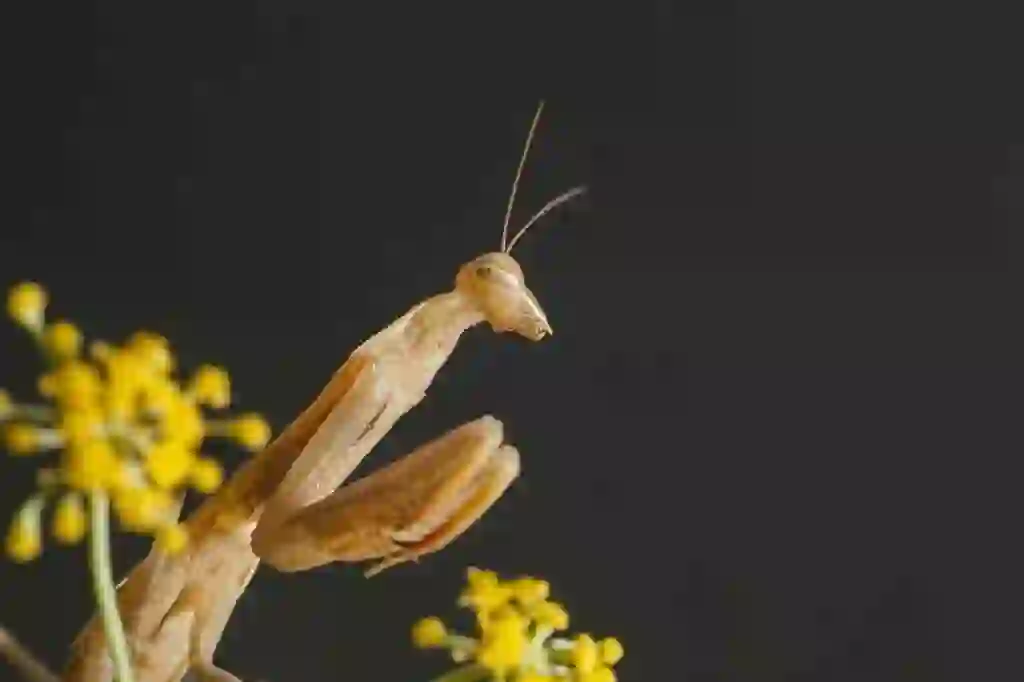
Where does the praying mantis get its name?
Mantis” is called “kamakiri” in Japanese. First, let me introduce you to the origin of why it is called “kamakiri” in Japanese. There are two theories: one is that the name “kamakiri” comes from “kamadekiru” (to cut with a sickle), and the other is that it comes from “kirigirisu” (cricket) holding a “kama” (sickle). The praying mantis has other names such as “kamakiri”, and “ogamimusi”. Let’s also take a look at the scientific name and the origin of the English name. The scientific name is Manteoda, which means prophet. The English name “Mantis” also means prophet, and “Praying Mantis” comes from the fact that its posture of waiting for prey with its front legs folded looks like it is praying.
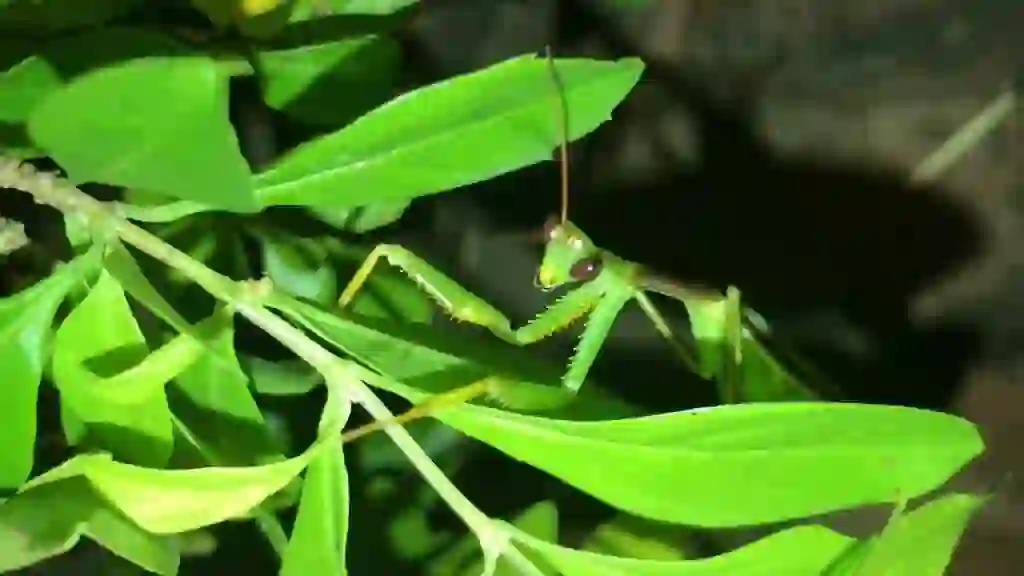
Why do praying mantises live in the grass?
Praying mantises live in grassy areas and on trees. This is because insects that serve as food live there. Those that live in grassy areas such as fields, rice paddies, and garden flower beds are “grassland” mantises, while those that live on low trees in mixed forests are “arboreal” mantises. The mantises that live on trees are Asian mantises, while those that live in grasslands and rice paddies are Japanese giant mantises, narrow-winged mantises, Asian jumping mantises, and so on.
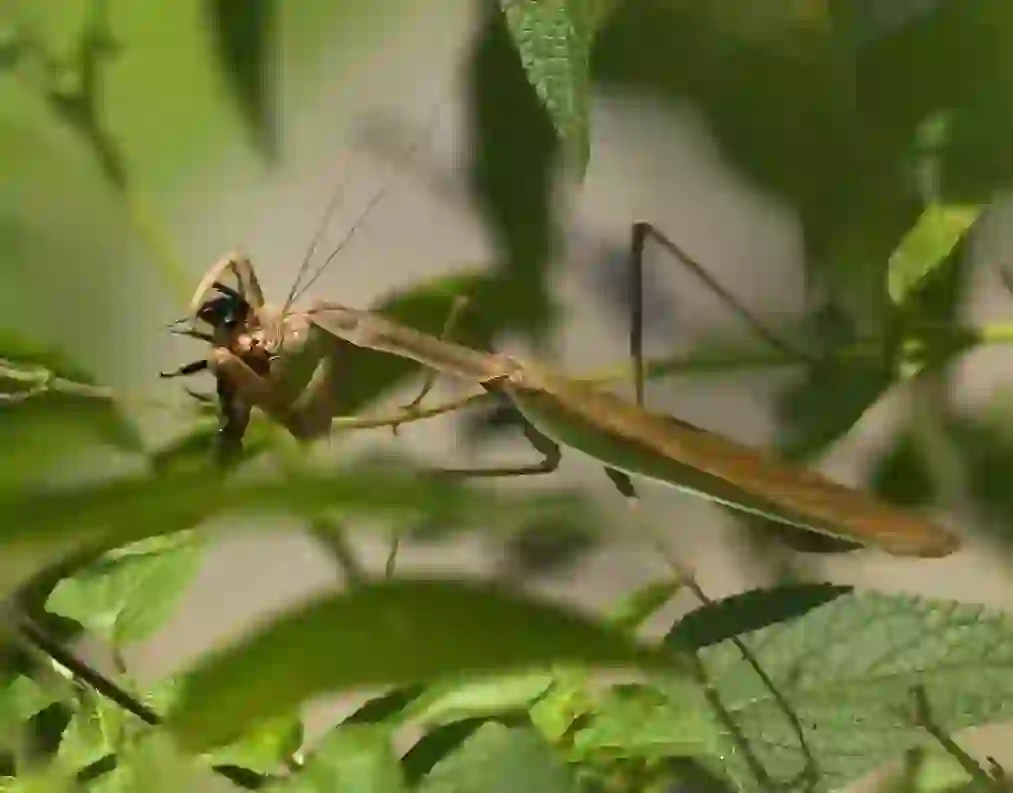
What to pay attention to when catching a praying mantis?
When looking for a praying mantis, look in grassy areas, flower beds, low trees in forests and parks. Praying mantises have a habit of attacking anything that moves as prey. It is safe to wear gloves to avoid injury to your fingers.
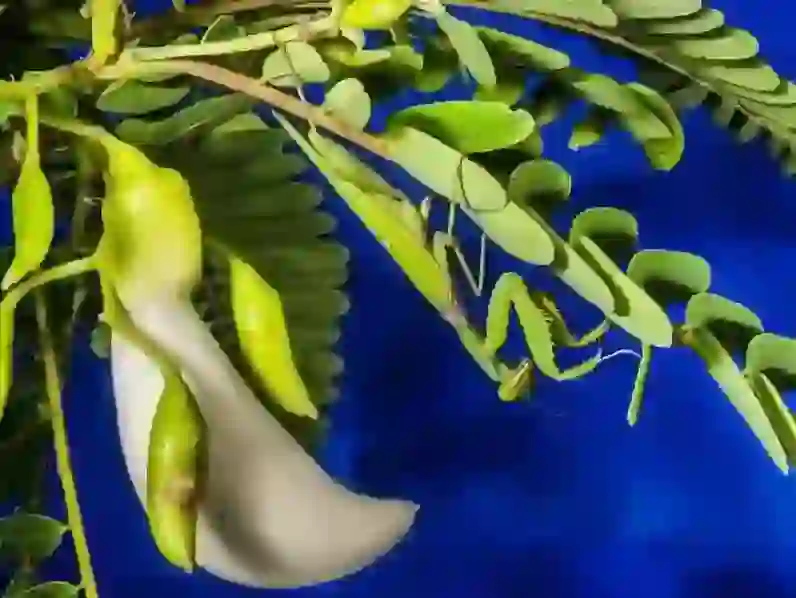
What do praying mantises eat?
Praying mantises are carnivorous and eat insects such as aphids, flies, crickets, butterflies, and grasshoppers as food. Large mantises also eat reptiles and small birds.
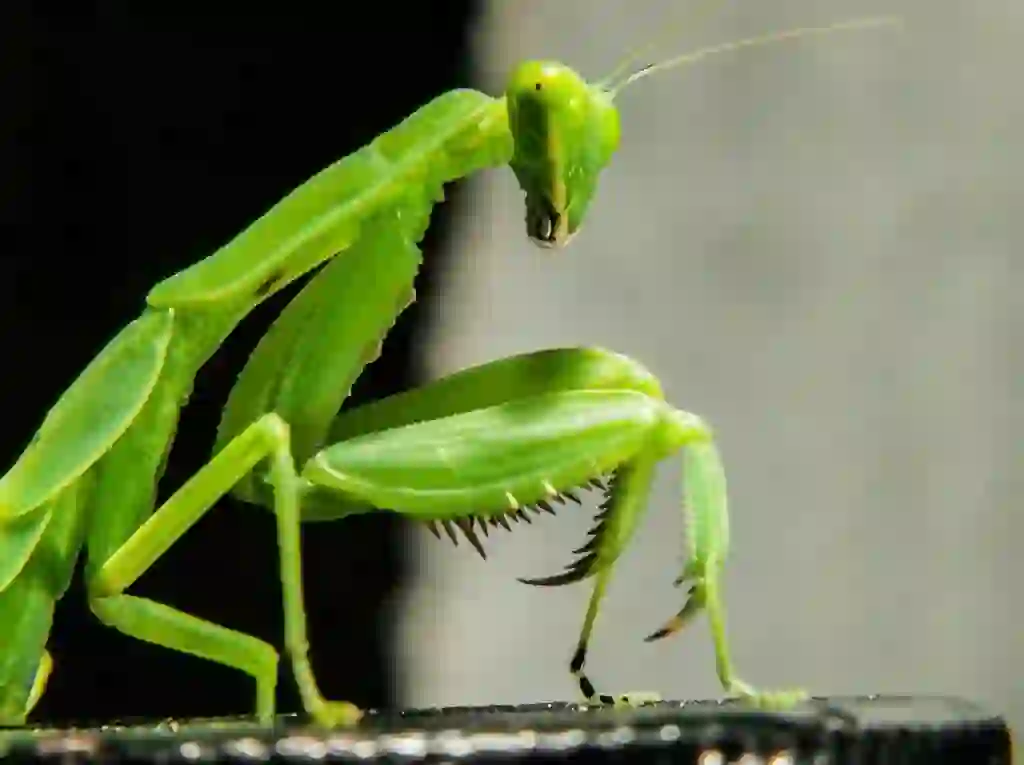
Do praying mantises also mimic?
Yes, praying mantises mimic their surroundings. There are praying mantises that look like leaves and those that look like dead branches. There are even praying mantises that mimic orchid flowers. Mantis mimicry is both "concealment mimicry," in which they hide from predators by mimicking surrounding plants and the ground, and "attack mimicry," in which they mimic surrounding leaves and flowers to ambush prey undetected.Attack mimicry is also called “Batesian mimicry”.
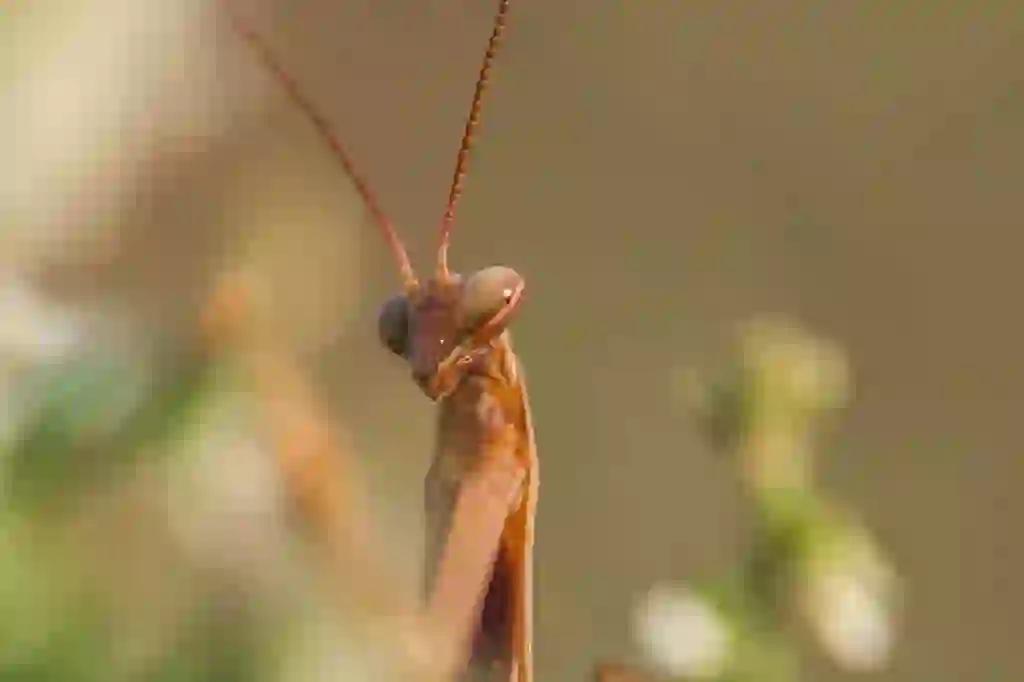
How do praying mantises find their prey?
Praying mantises can see almost 360 degrees. Moreover, praying mantises can see things in three dimensions and can sense the distance to their prey. That’s why they can catch prey with their forelegs without missing any small movements of the prey.
Also, praying mantises can take in more light at night, so they can search for prey even at night.
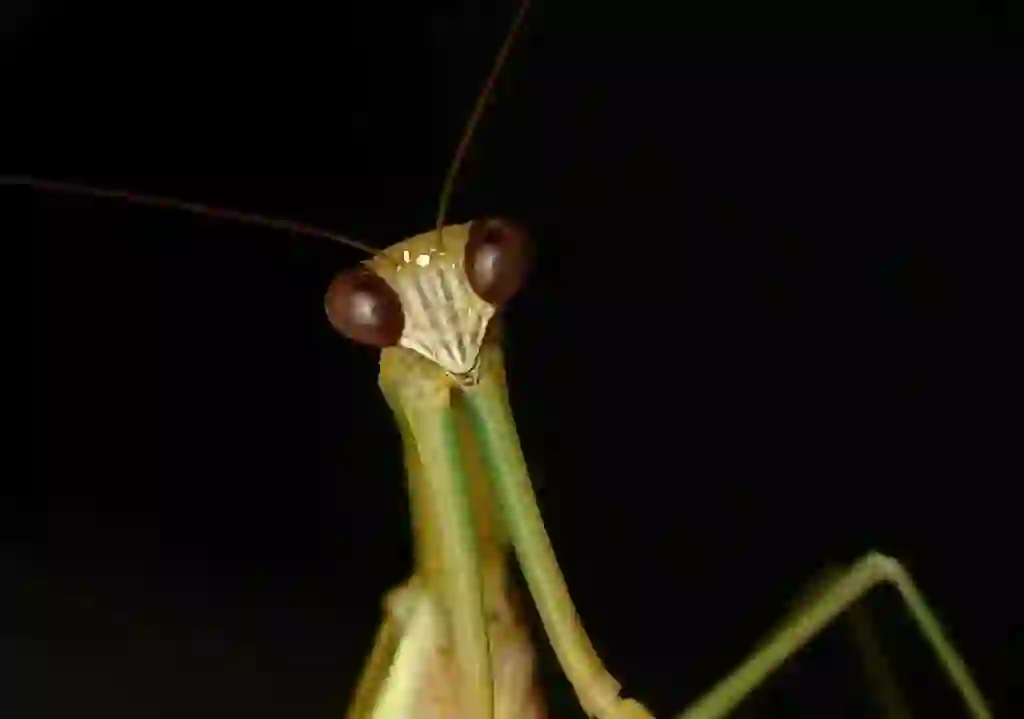
Why do mantises always make eye contact?
Many people have experienced being stared at by a praying mantis even when they move to the right or left. Actually, the reason why people feel that they are “making eye contact” with a praying mantis is not because the praying mantis’s eyes are moving in response to their movements. Praying mantises have compound eyes. Compound eyes are made up of small cylindrical eyes called ommatidia. When we look at a praying mantis, the black spot that looks like a pupil is the black part at the bottom of the praying mantis’s cylindrical eye, called a pseudopupil. It looks like we’re making eye contact because we can see the pseudopupil from any angle.
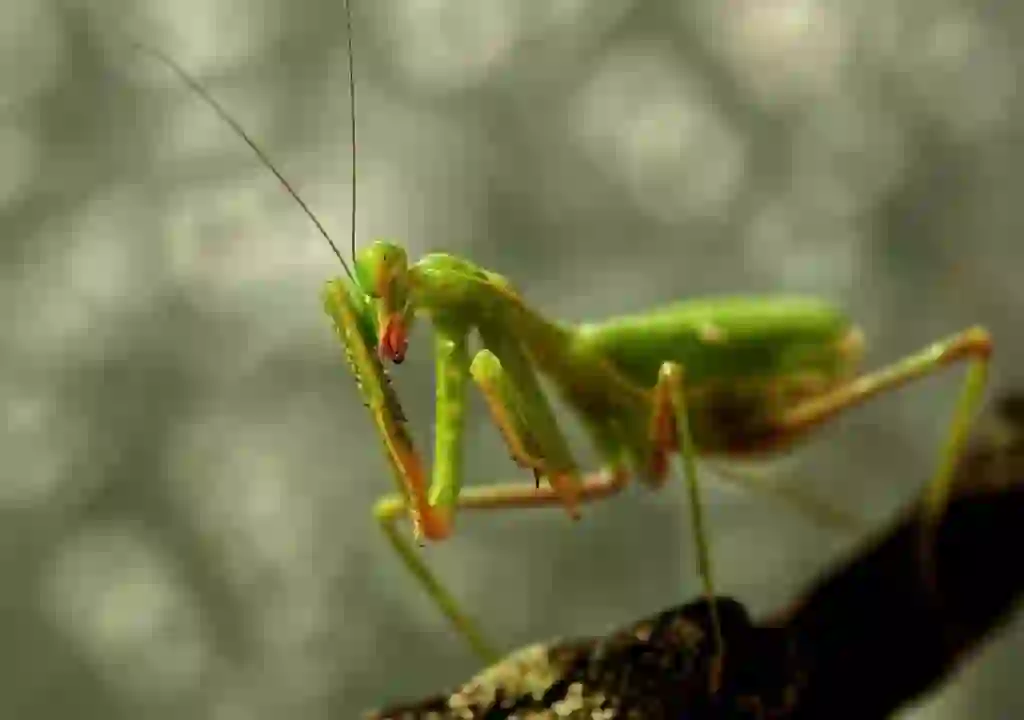
Why do praying mantises' eyes turn black at night?
Praying mantises have three simple eyes between their antennae in addition to their two large compound eyes. These simple eyes sense brightness and when they sense darkness, the compound eyes expand to take in more light. That’s why the entire praying mantis’s eyes look black because the black bottom of the cylindrical eye can be seen from any angle.
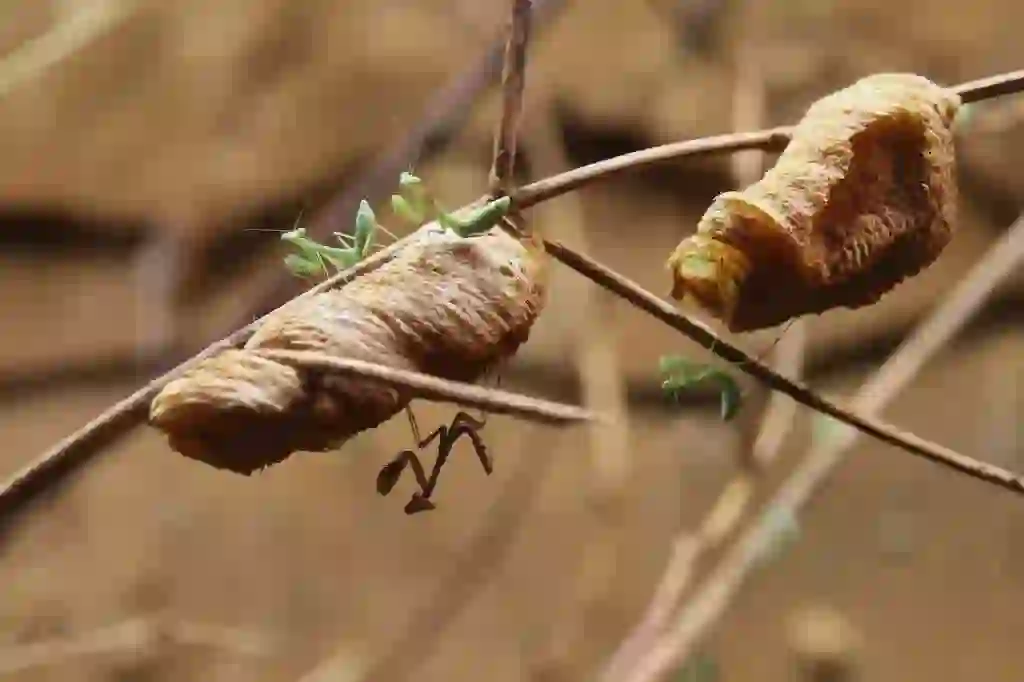
Why does a praying mantis rub its face?
When observing a praying mantis, sometimes it rubs its face with its forelegs as if washing its face. Actually, it’s cleaning its eyes. The praying mantis’s forelegs have brush-like structures that can remove dirt from the eyes when rubbed.

Can praying mantis ears?
Praying mantises have organs that function like ears in the central depression of their chest. While human hearing is said to range from 20 Hz to 20 kHz, praying mantises can hear sounds slightly above 20 kHz. They can also hear ultrasonic waves used by bats, their natural predators, and can escape from them.
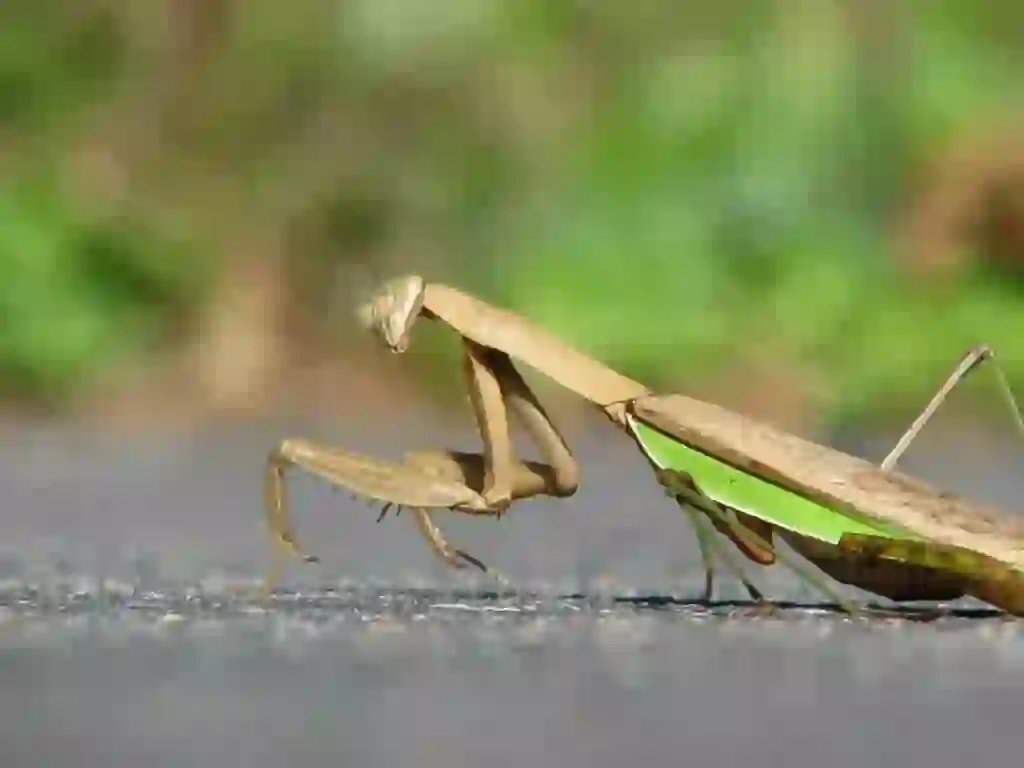
Why are praying mantis eggs in bubbles?
Mantis eggs are contained in a foamy sheath. The egg case is made of a bubbly secretion that is produced at the same time as the eggs and has a sponge-like elasticity. Each egg case contains several hundred eggs. The eggs are protected from external shocks and temperature changes because they are surrounded by numerous bubbles inside the egg case.
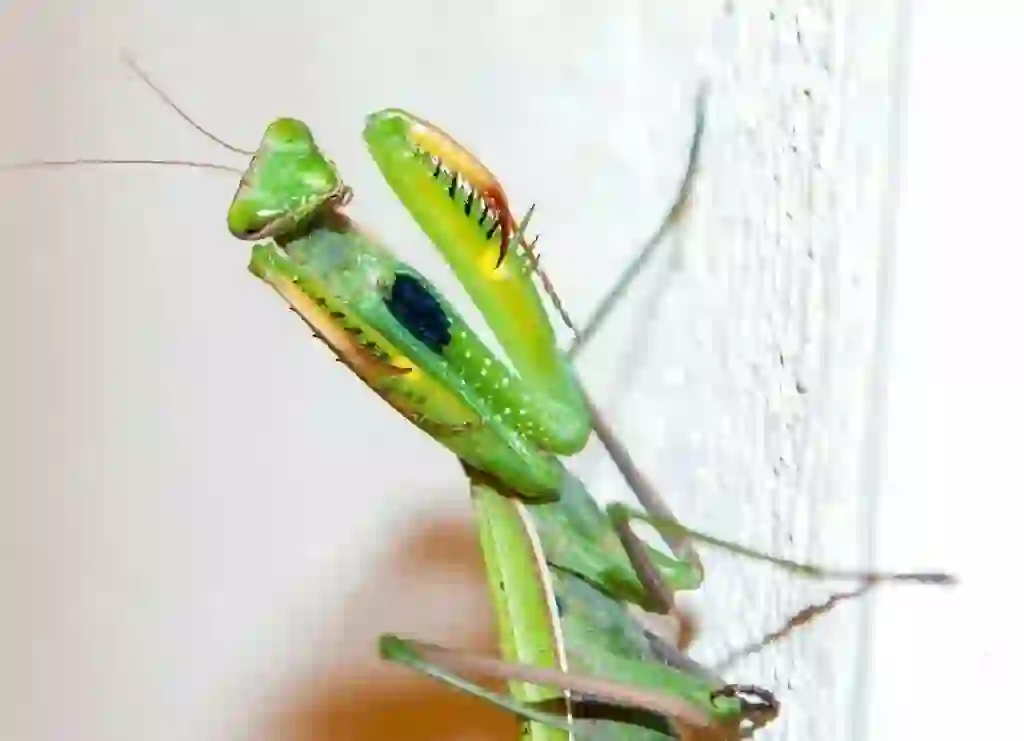
Is it true that there are various names for praying mantis depending on the region?
Yes. Praying mantises have various names depending on the region in Japan. I will introduce the names used in Japan this time. Because the pose of aligning the sickle in front of the chest looks like praying, it is also called “ogamimusi”(worship insects) in various parts of Japan. In the past, there were also regions where they were called “ibomusi” because it was believed that if they gnawed on warts with a praying mantis or crushed a praying mantis and applied it to warts, the warts would disappear. There were also regions that called lizards praying mantises and praying mantises lizards until recently. It’s confusing! There are many other names such as “ogamo”, “ibokui”, “haetori”, “kamagittcho”, “tonnronnbo” and many others used in various parts of Japan.
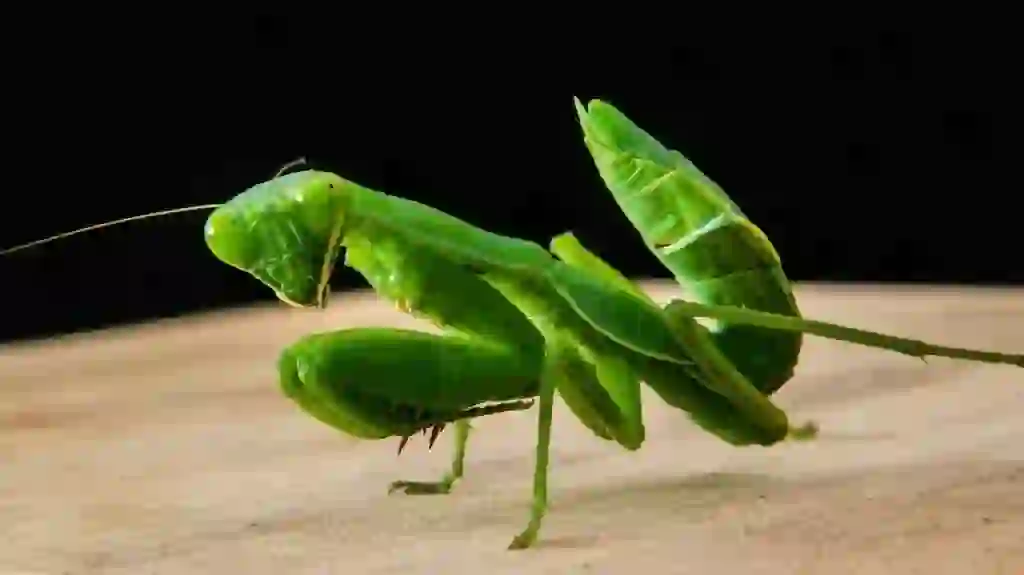
Is it true that there is a festival float with a praying mantis?
Yes. The “Toro-yama” of the Gion Festival in Kyoto has a praying mantis karakuri on top of the float. During the procession, it shows a charming movement by spreading its wings, tilting its head, and shaking its sickle. Not only on the float, but also on the “Toro-yama”, there are many praying mantises everywhere, and you can find decorative fittings such as golden praying mantises. There is also a “kamakiri omikuji” where a trick praying mantis draws lots for you at the meeting place!
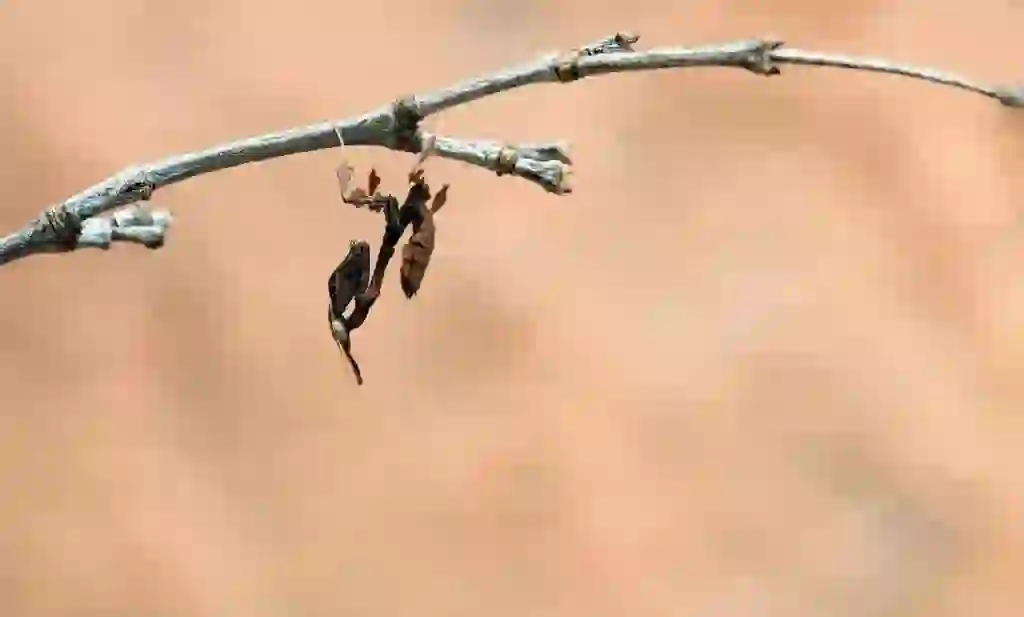
What kind of praying mantis are in the Japan?
It is said that there are more than 8 species of mantis belonging to 2 families, the mantis family and the flower mantis family, living in Japan.
【Mantidae.】 ・Japanese giant mantis. Length:About 6.5cm to 10cm. Distributed in Hokkaido, Honshu, Shikoku, Kyushu and Tsushima. Green or brown. The base of the forelegs is yellow or orange. It captures and eats all kinds of insects and sometimes reptiles with its powerful sickle. It inhabits grassy areas and trees.
・Narrow-winged mantis. Length:About 6cm to 9cm. Distributed in Honshu, Shikoku, Kyushu, Tsushima and Okinawa Island. Green or brown. The base of the forelegs is yellowish-orange. It is slightly smaller and thinner than the Japanese giant mantis. It can be found not only in grassy areas but also around houses and parks. In Japan, when people say “Kamakiri”, they refer to this Narrow-winged mantis. ・European Mantid. Length:About 4.5 to 6.5cm. Distributed south of southwestern Hokkaido. Green or brown. There is an oval black pattern on the inside of the forelegs. Many mantises living in Japan can hardly fly, but the European Mantid can fly.
・Asian jumping mantis. Length:About 4cm to 7cm. Distributed in Honshu, Shikoku, Kyushu and Tsushima. Brown, occasionally green. There is a white spot with a blue border on the inside of the forelegs. ・Asian mantis. Length:About 4.5cm to 7cm. Distributed south of Honshu. Green with occasional brown color. Slightly plump body with several yellow protrusions at the base of the forelegs.
・Amantis nawai. Length:About 1cm to 2cm. Distributed south of Honshu. Light brown to yellow-brown. Extremely small. Found on the forest floor and low trees. It captures small insects such as ants and eats them. 【Hymenopodidae.】 ・Japanese boxer mantis. Length:About 2.5cm to 3.5cm. Distributed in Honshu, Shikoku and Kyushu. Brown or green. Small and moves quickly. There are speckled patterns on the middle and hind legs, and thorn-like protrusions near the end of the thigh joint. The compound eyes have linear complex patterns. ・Orchid Praying Mantis. Length:About 3cm. Distributed in Honshu, Shikoku, Kyushu and the southwestern islands. It resembles the Japanese boxer mantis, but the Orchid Praying Mantis overwinters as a larva. Although there are few records, it is said that other species such as Orthodera burmeisteri, Boxer Mantis, Tenodera fasciata, Statilia apicalis, Statilia nemoralis and Orthodera sp. also inhabit the area. However, there are many things that are not known accurately, and there may be more species of mantis living there.
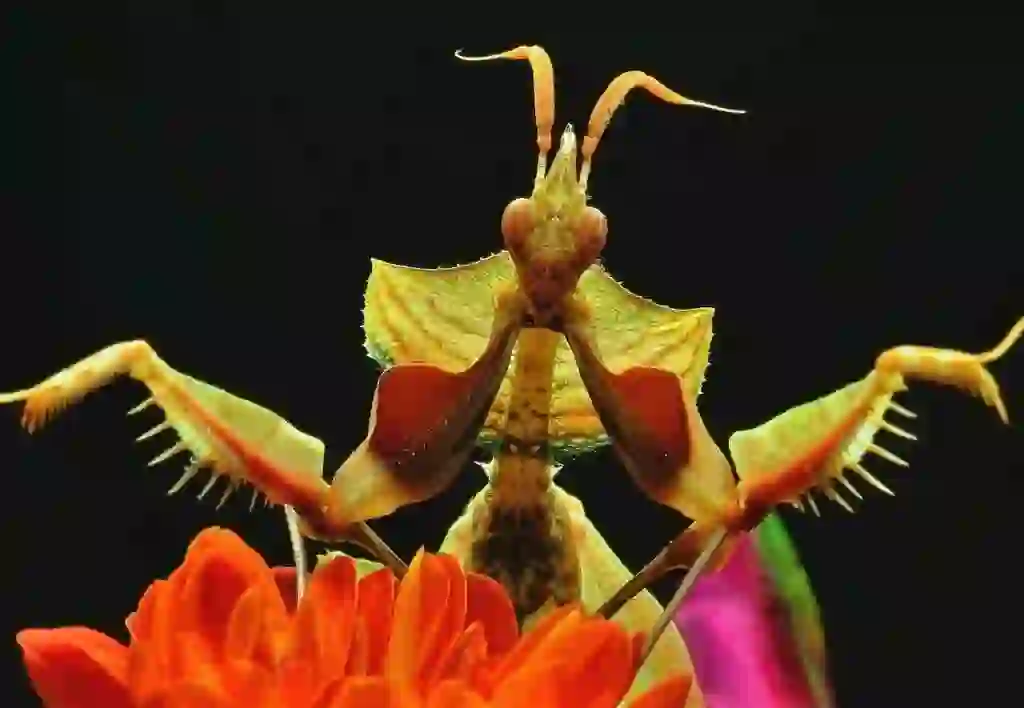
What kind of praying mantis are there in the world?
There are a variety of mantis species that inhabit the world, ranging from common mantises to those without sickles, mantises that look exactly like dead leaves or dead branches, and mantises with colorful colors. There are many popular species of mantis, and just hearing their names is interesting. However, when you see their shapes, you will be amazed at their uniqueness! 【Hymenopodidae.】 ・Walking flower mantis. Length:About 7 cm. Distributed in Southeast Asia. The larva mimics orchid flowers and preys on them. ・Boxer Mantis. Length:About 4 cm. Distributed in Southeast Asia. It looks like a boxer when it threatens with its arms that look like boxing gloves. 【Hymenopodidae.】 ・Ghost mantis. Length:About 5 cm. Distributed in Africa and Madagascar. It is also called “Ghost Kamakiri” because of its alien-like body. It mimics dead leaves and sways in the wind, which, combined with its eerie appearance, makes it look like a ghost.
【Empusidae.】 ・Empusa pennata. Length:About 10 cm. Distributed in Africa, Southeast Asia, and southern Europe. It has a larger protrusion between its compound eyes than its compound eyes. ・Devil's flower mantis. Length:About 10 cm. Distributed in Africa. The adult has a white and green mottled pattern with reddish-purple forelegs. The threatening pose is just like that of a demon king.
・Violin Mantis. Length:About 8-9 cm. Distributed from Southeast Asia to South Asia. It has a violin-shaped translucent elytra and a belly that resembles dead leaves. The male adult has comb-like antennae like a moth.
【Toxoderidae.】 ・Giant Malaysian Stick Mantis. Length:About 15-20 cm. Distributed in some parts of Southeast Asia (Malaysia). It is the world’s largest mantis and is also called “Dragon Mantis”. It has a body that looks like a dead tree and scales like leaves on its chest and legs. The eyes with horns look like thorns on a dead branch, and when it hangs on a tree and shakes its body with thin legs, it looks like a small branch swaying in the wind. It also eats reptiles as well as insects.
【Chaeteessidae.】 ・Chaeteessa valida. Length:Unknown. Distributed in South America. As the name suggests, it does not have a scythe and has short wings from the neck to the abdomen and long tail legs at the end of the abdomen. It is considered to be the closest to ancient species among living species of mantis. 【Metallyticidae.】 ・Iridescent bark mantis. Length:About 4 cm. Distributed in Southeast Asia. It is also called “Hanmyou Kamakiri” because of its green metallic luster and is said to be the most beautiful mantis in the world. It moves quickly like a cockroach, and the female has red mixed with green on a green background, while the male has blue mixed in.

Would you like to become a part of the 'Animalbook.jp'?
Turn your knowledge into Q&A and share it with the world. ※Publication will be activated after purchase. Let's share information together!
Mantis Type of List
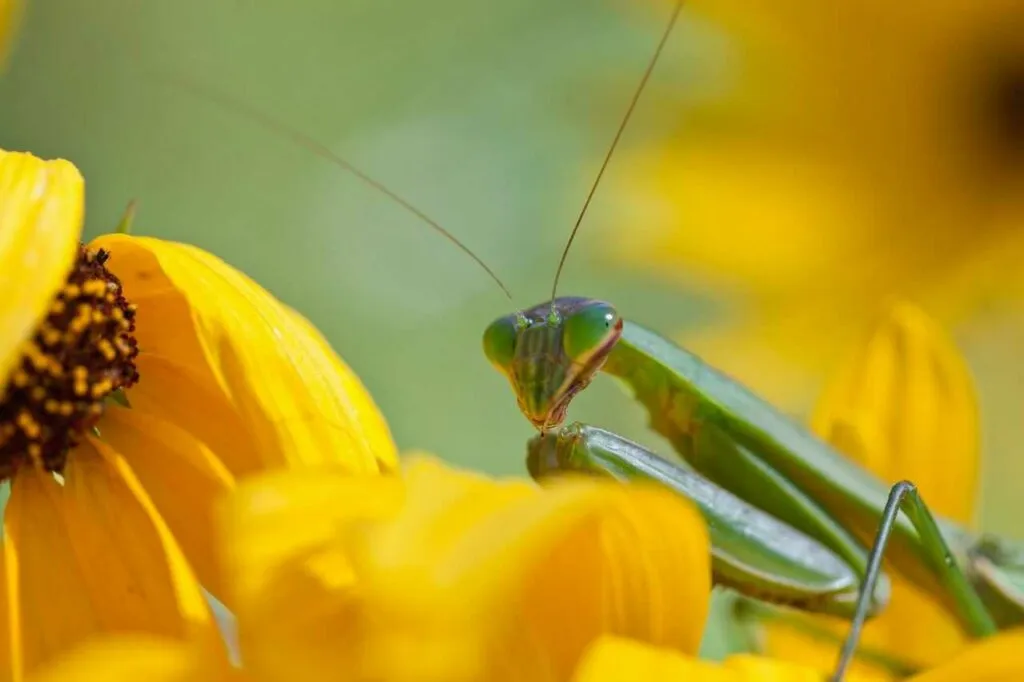
Japanese giant mantis. Asian jumping mantis. Amantis nawai. Narrow-winged mantis. Asian mantis. Hierodula membranacea. European Mantid. Iridescent bark mantis. Parablepharis kuhlii. Devil's flower mantis. Walking flower mantis Banded flower mantis. Common flower mantis. Deroplatys lobata. Ghost mantis. Euchomenella heteroptera. African mantis. Chlidonoptera vexillum. Spiny flower mantis. Japanese boxer mantis. Orchid Praying Mantis. Violin Mantis. Giant Malaysian Stick Mantis. Boxer Mantis. Chaeteessa valida. Conehead mantis.
Information
Congratulations! You are the first commenter!

Create Your Favorite List!
Mantis
Save the animals you love! Build your own list to quickly revisit your favorites later.

Would you like to leave a comment?
※Please note: This is for the purchase of rights to post comments within the article.
Find Your Favorites!
Our shop offers a unique and attractive selection of goods themed around various animals.
Mantis References

- wikipedia カマキリ https://ja.wikipedia.org/wiki/カマキリ
- wikipedia 擬態 https://ja.wikipedia.org/wiki/擬態
- ネイチャーエンジニアいきものブログ https://www.nature-engineer.com/entry/2018/09/22/013011
- 自然しらべ カマキリの話 https://www.nacsj.or.jp/shirabe/2008/07/1754/
- ナショジオニュース カマキリの知られざる力 https://style.nikkei.com/article/DGXMZO35367950U8A910C1000000
- 自然のチカラ 昆虫や野生動物、植物の不思議 https://animalbattles.wealthyblogs.com/?p=18830
- ととゆめぶろぐ https://osakanadream.com
- 携帯知恵袋 https://keitai-tiebukuro.com
- ホンシェルジュ https://honcierge.jp/articles/shelf_story/4531
- あにまるじゃんくしょん https://etervalu.com/
- ムシミル https://insect.design/
- kokanet子供の科学 https://www.kodomonokagaku.com/read/hatena/5157/
- カラパイア https://karapaia.com
- 雑学unun https://zatugakuunun.com/yt/kontyu/9696/
- 京都文化博物館 https://www.bunpaku.or.jp/exhi_matsuri_post/tourouyama2018/
Mantis Introduction of media used
出典:https://pixabay.com/videos/id-5007/

出典:https://unsplash.com/photos/DY3c1eXE_Ok

出典:https://pixabay.com/images/id-190176/

出典:https://unsplash.com/photos/iZJTmZAff8w

出典:https://pixabay.com/images/id-1508465/

出典:https://pixabay.com/images/id-5117356/

出典:https://pixabay.com/images/id-2696935/

出典:https://pixabay.com/images/id-3314137/

出典:https://pixabay.com/images/id-67762/

出典:https://pixabay.com/images/id-219085/

出典:https://pixabay.com/images/id-205169/

出典:https://pixabay.com/images/id-4436529/

出典:https://pixabay.com/images/id-3022076/

出典:https://unsplash.com/photos/uuuujkCi7zQ

出典:https://pixabay.com/images/id-4890048/

出典:https://pixabay.com/images/id-3994951/

出典:https://unsplash.com/photos/Typj_10rV2o

出典:https://pixabay.com/images/id-3401377/

出典:https://pixabay.com/images/id-190167/

出典:https://pixabay.com/images/id-259306/

出典:https://pixabay.com/images/id-769454/
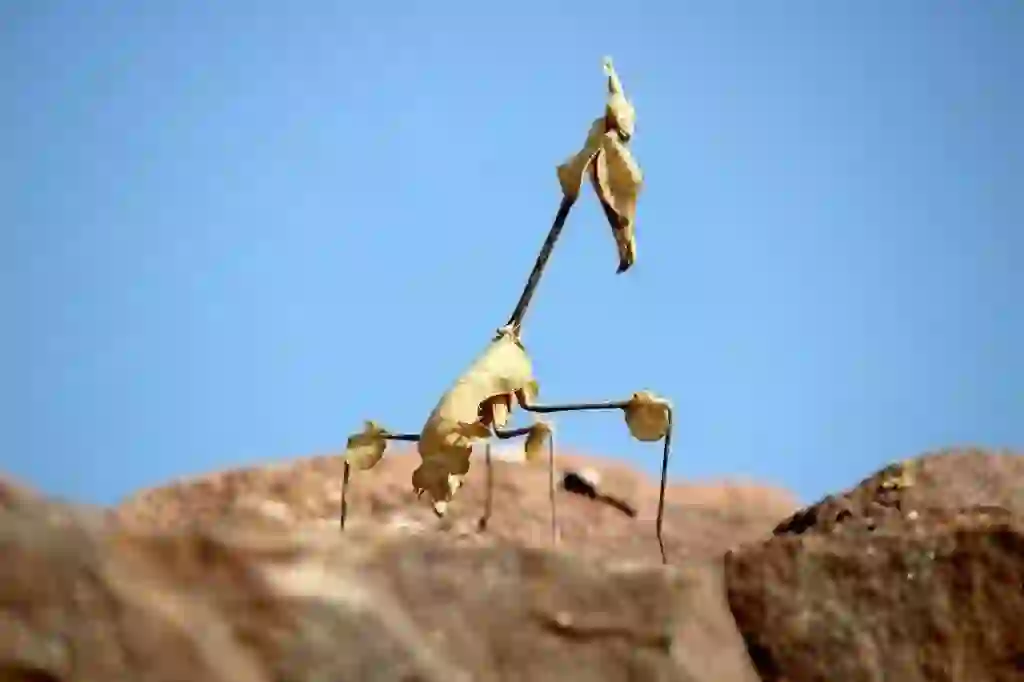
出典:https://pixabay.com/images/id-5060366/
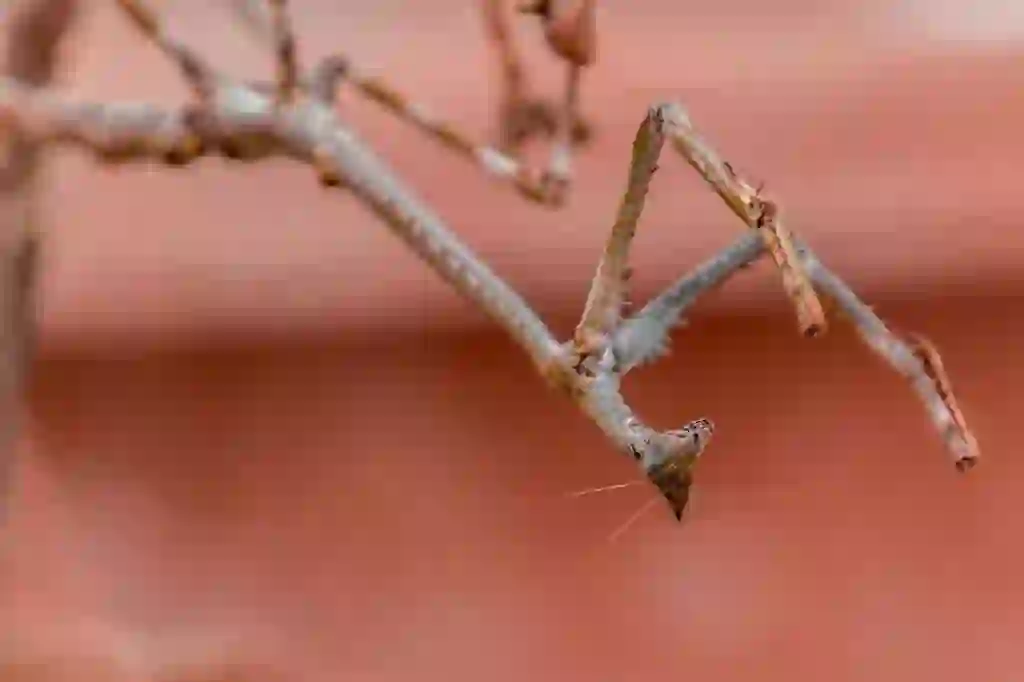
出典:https://pixabay.com/images/id-2393205/

Help Enrich Our Animalbook.jp with Your Media!
We are constantly looking to expand and enrich our Animalbook.jp with amazing photos and videos of animals. If you have any media that you'd like to share, please contribute and help us showcase the beauty and diversity of the animal kingdom. Your submissions will be credited and featured in our encyclopedia, reaching a wide audience of animal lovers.


















